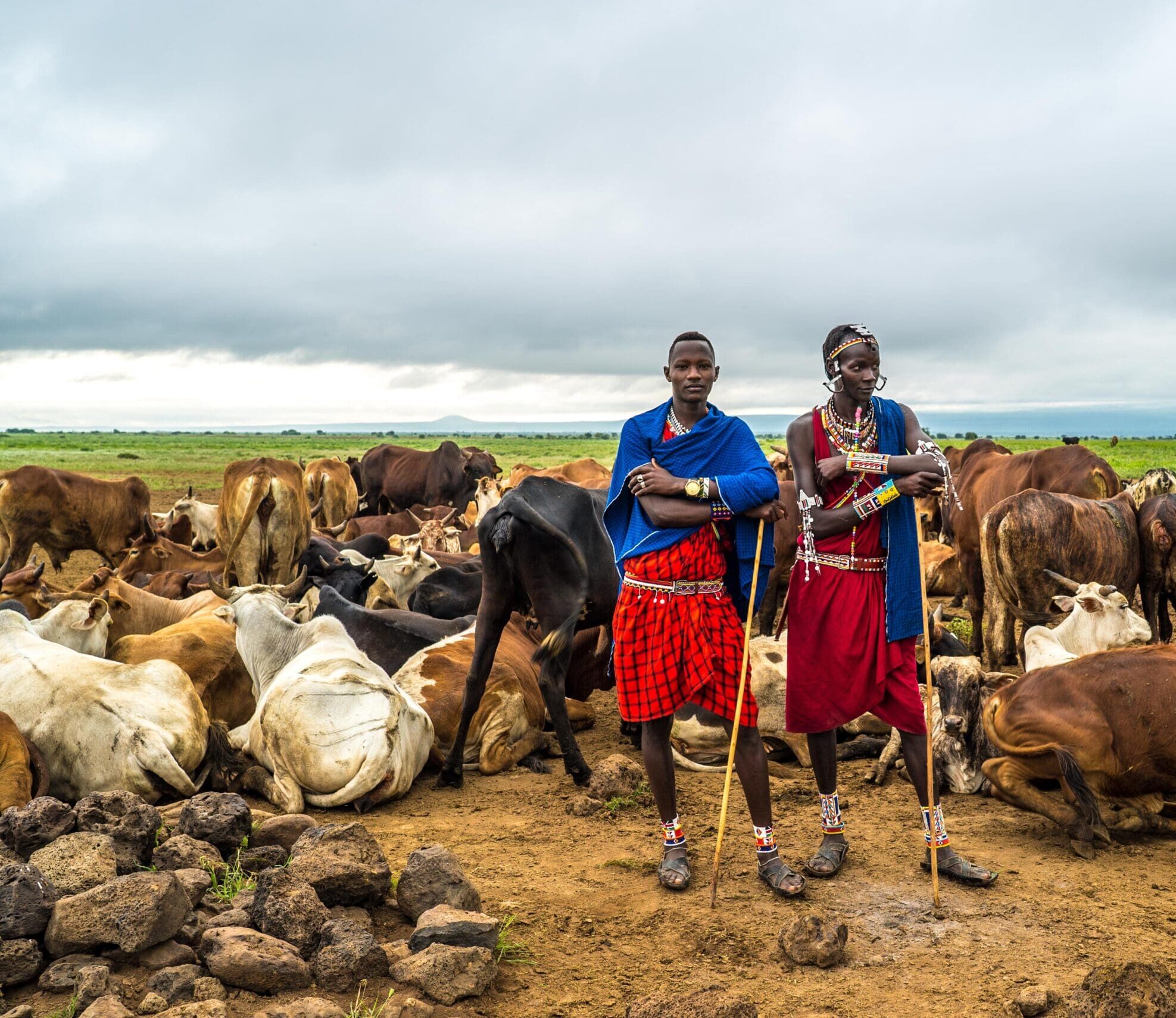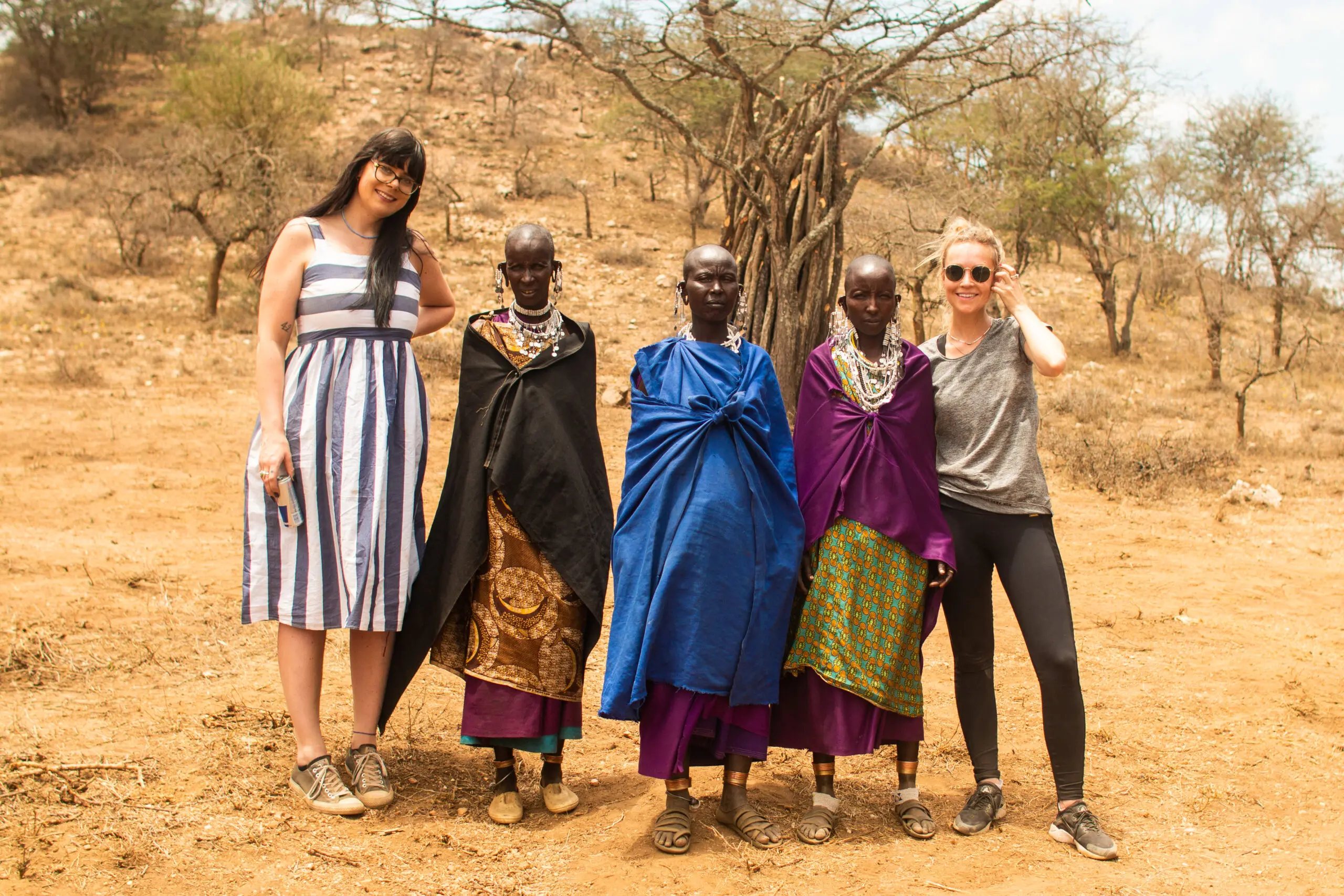Mount Kenya
The top of Kenya. This natural wonder is something you simply can’t skip. With its incredible mix of forests, birdlife and culture there’s something here for everyone.
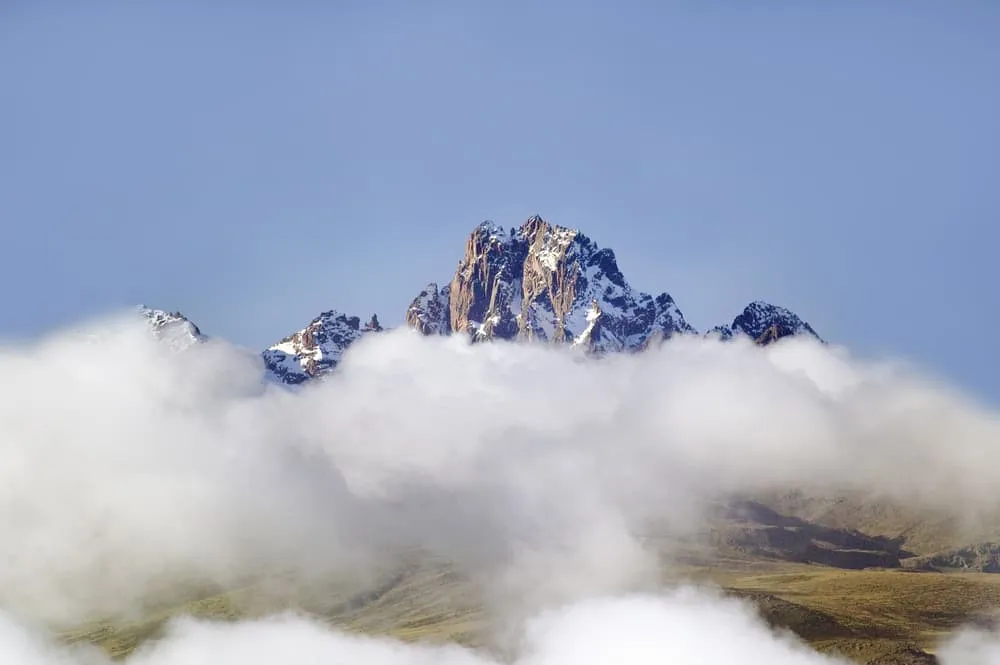
Admire Kenya’s highest peak
Mount Kenya is the highest mountain in Kenya and the second highest in Africa. The country even takes its name from this majestic giant. This magical place, where adventure and nature meet, is an ancient volcano towering more than 5200 meters above sea level. From a distance, places like Nanyuki offer stunning views of its three main peaks, Batian, Nelion and Lenana. If you decide to take on the climb you’ll pass through rainforest, bamboo and alpine moorland.
There’s a route for every kind of hiker and at the top you’ll find yourself in an otherworldly landscape of glaciers and rare plants. But this sacred mountain is more than just a great trek. For local communities like the Kikuyu, Mount Kenya is the home of their god, Ngai. They traditionally build their houses with the front door facing the mountain to honor this sacred place.
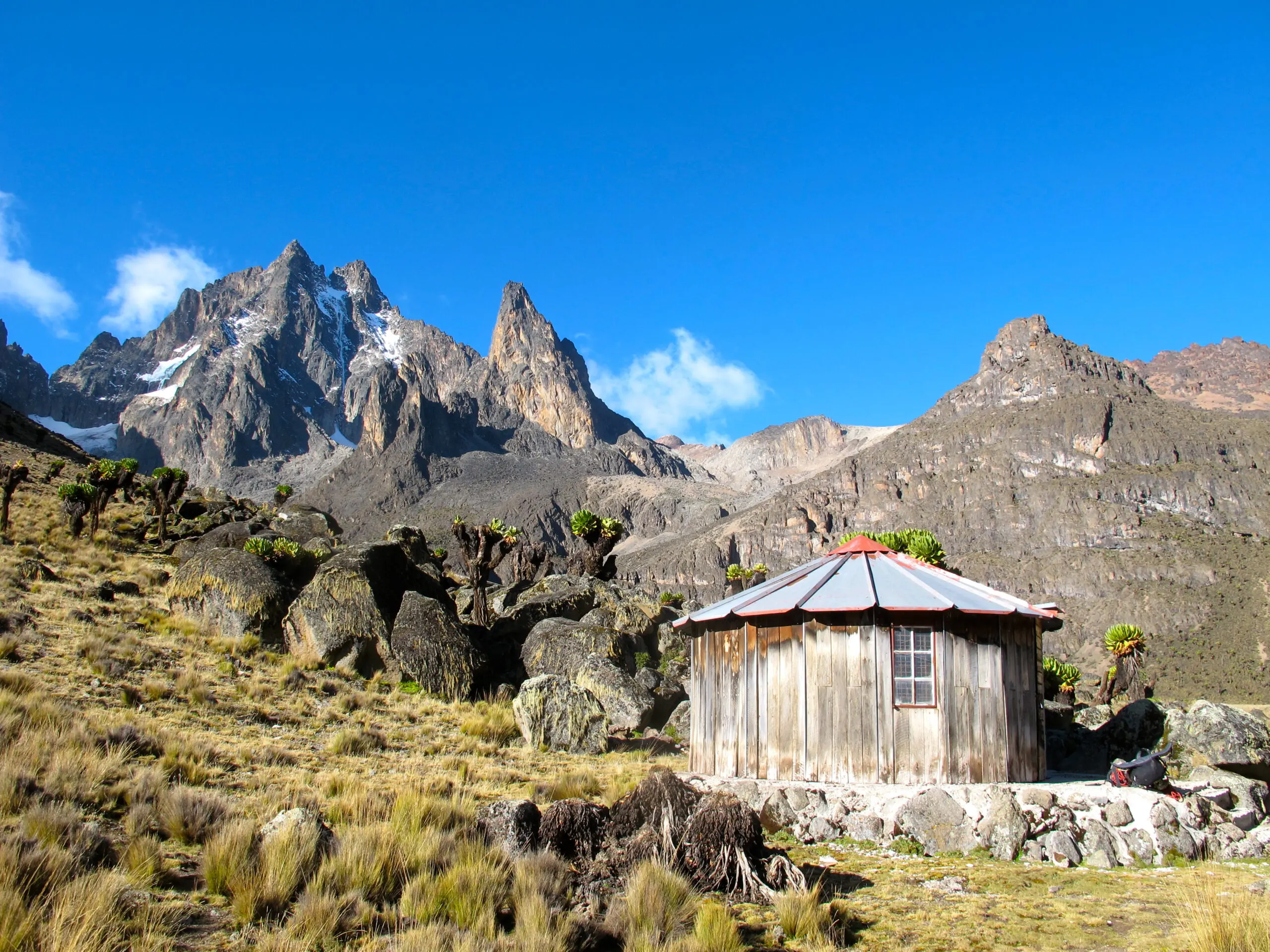
Things to do around Mount Kenya
Hiking might not be for everyone, but even without hiking boots this mountain is something to admire.
Climb Mount Kenya
There are several routes to reach the summit, each with different levels of difficulty. The most popular ones are the Sirimon, Chogoria and Naro Moru routes. During this multi-day trek you’ll sleep in tents or huts. You’ll be accompanied by a guide, a chef and a few porters who carry most of the gear. The trek usually takes three to five days depending on your pace and route. You’ll walk through rainforest, bamboo and highland moorlands, so the scenery never gets boring. Make sure to pack warm clothes, as temperatures can drop to minus ten at night.
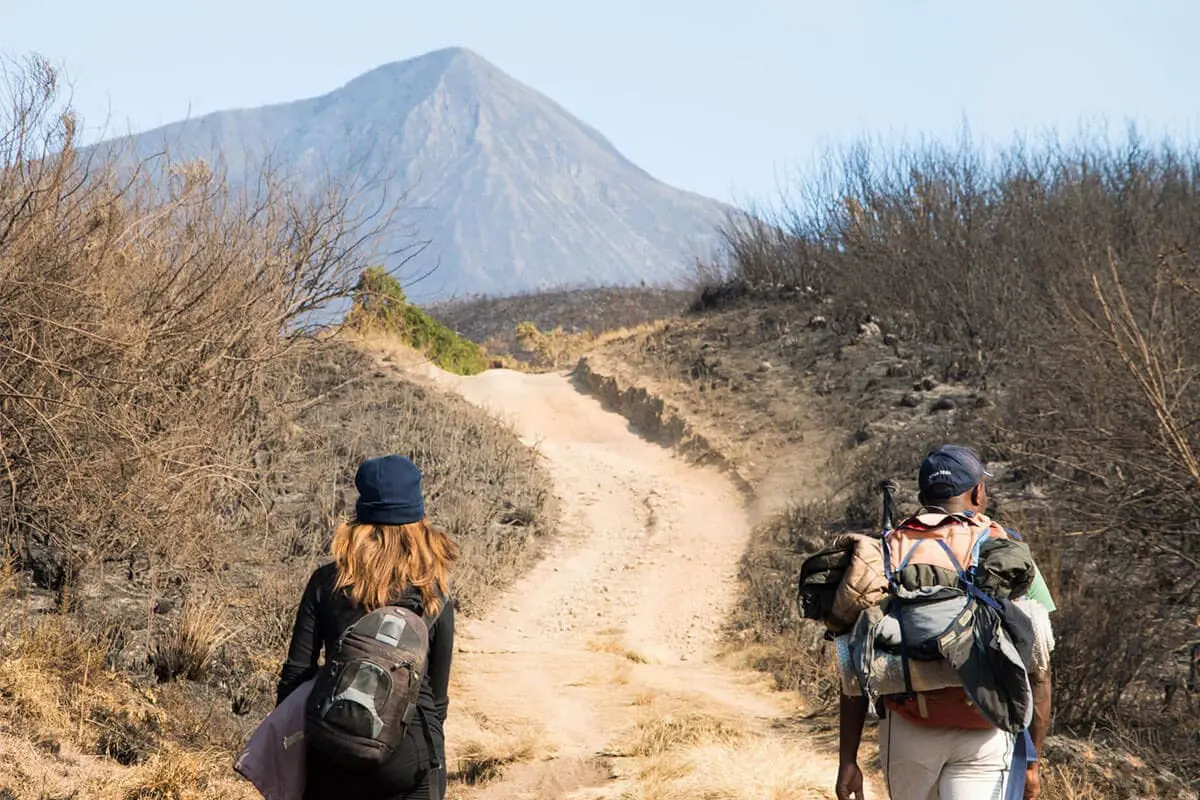
Horse patrol
Not a hiker but still love the mountains? Experience Mount Kenya on horseback. You’ll join local rangers on a patrol through the forest. It’s not a wildlife chase, but you might spot elephants or rhinos along the way. The rangers will take you deep into the jungle and share their knowledge about conservation and protecting this fragile ecosystem. It’s educational, unique and absolutely unforgettable.
Jungle, hiking and fly fishing
A combo you don’t come across often. Take a two to five hour walk through the dense jungle of Mount Kenya, past waterfalls and incredible viewpoints. Fishing lovers can spend a quiet half day fly fishing in crystal clear mountain streams. Together with local rangers you’ll explore this rich area and all its surprises. It’s the perfect adventure for less experienced hikers or families with young kids who aren’t quite ready to tackle the summit yet.
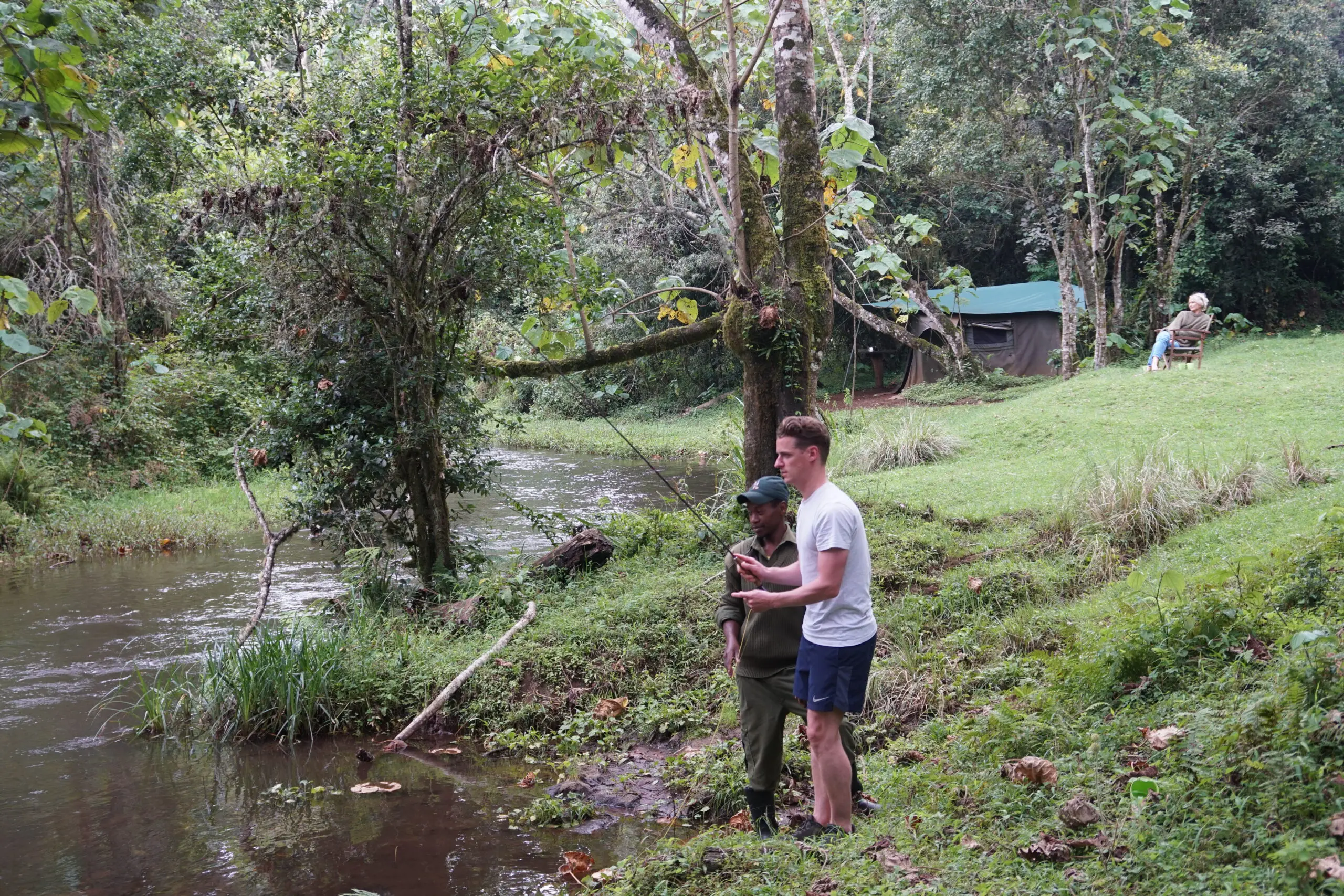
Charlie's way of travelling
Our team lives and works in Africa
We develop our own routes
Your trip is tailor-made by us
100% insured while travelling
All your burning questions about Mount Kenya answered
What makes Mount Kenya special?
Mount Kenya is the second highest mountain in Africa at 5199 meters and is known for its dramatic peaks, glaciers and unique vegetation. It’s a UNESCO World Heritage site and a paradise for adventurers and nature lovers.
Can you climb Mount Kenya without experience?
Yes, the lower routes like Sirimon or Naro Moru are accessible for beginners with good fitness. For higher peaks such as Point Lenana some trekking experience helps, but you don’t need technical climbing skills.
How long does it take to climb Mount Kenya?
Most treks to Point Lenana take three to five days depending on your route and acclimatization. Technical climbs to Batian or Nelion take longer.
When is the best time to climb Mount Kenya?
The best months are January to March and July to October. These are the dry seasons with the lowest chance of rain and slippery trails.
Is it safe to climb Mount Kenya?
Yes, with an experienced guide it’s safe. Altitude sickness can be a risk, so proper acclimatization is important. We’ve got plenty of experience with this climb and only work with trusted local partners.
Which route should I choose for the climb?
The most popular routes are Sirimon for an easier climb with great views, Chogoria for spectacular landscapes and Naro Moru for a shorter but steeper route. Some hikers mix and match routes for a more varied experience.
Discover more in Kenya
Or browse through all our unique and authentic experiences

Mount Kilimanjaro
At 5,895 meters and boasting three peaks, this is a must-see for any African traveler. From Amboseli, you can enjoy a magnificent view of this iconic African highlight.
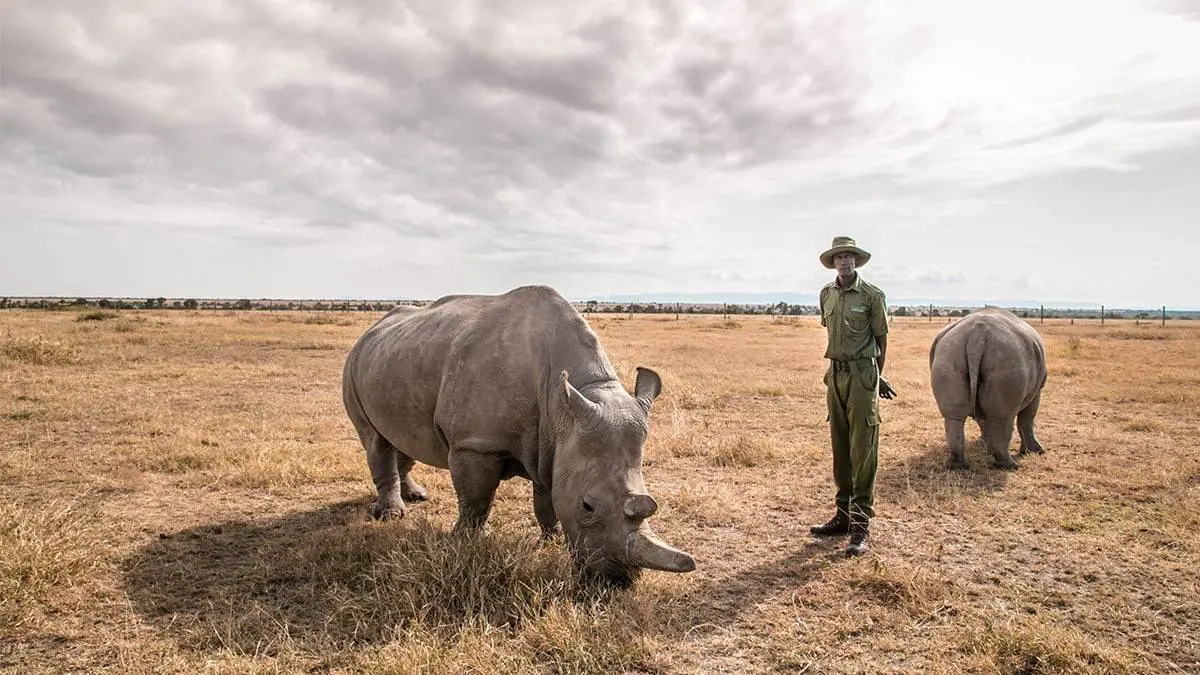
Northern Conservancies
In the north of Kenya, where elephants cross the road every day and the river provides the land with life, this is where you, as a traveler, truly go ‘Off the beaten track’.

Adventurous road tripping through Northern Kenya
Drive along the slopes of Mount Kenya and discover beautiful waterfalls, travel to Samburu for a safari and finish in peace on the coast.

Need travel advice? Ask our Africa experts
Hungry for the unknown? Our Africa experts have the answers to your burning questions.
